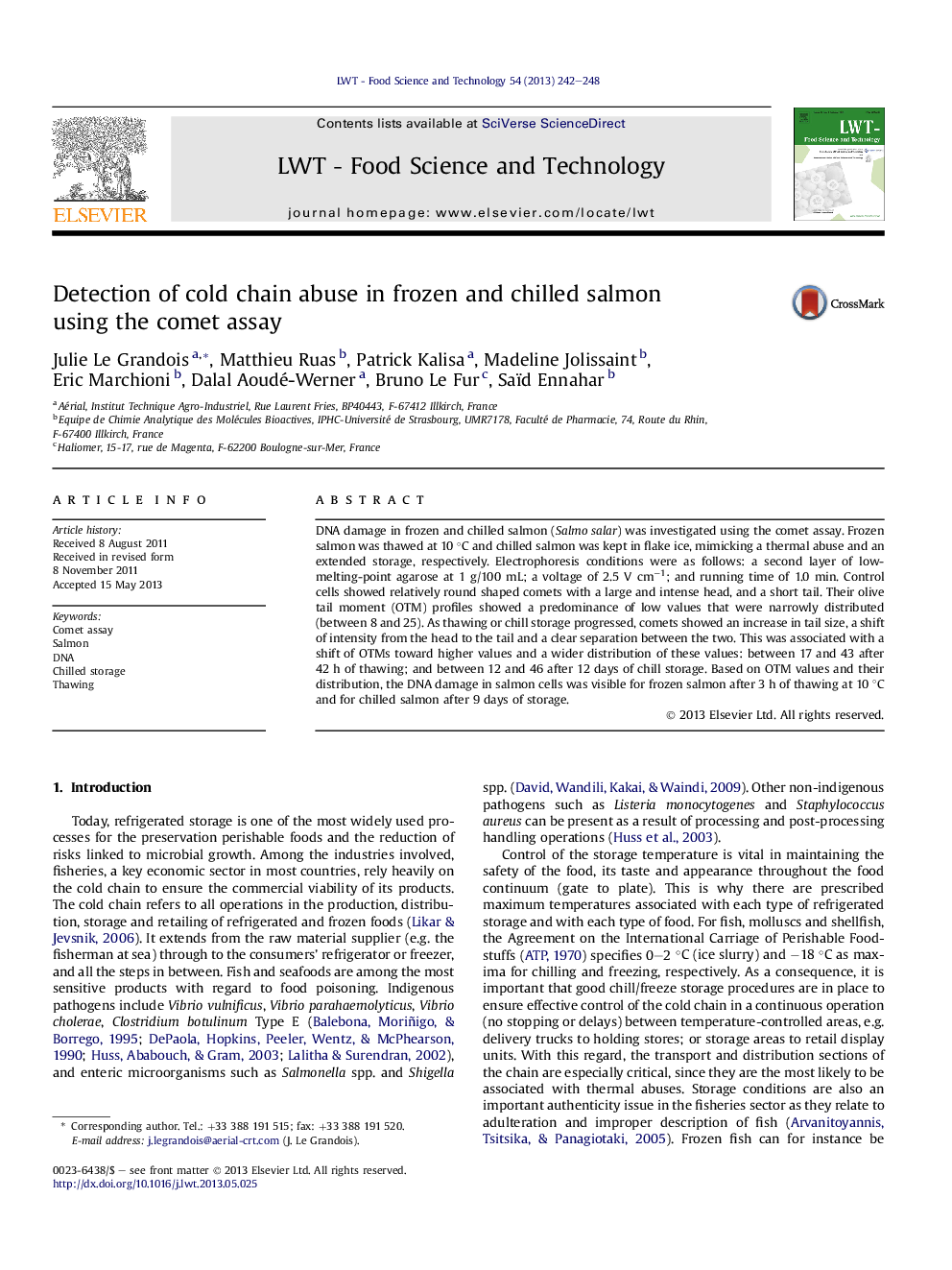| Article ID | Journal | Published Year | Pages | File Type |
|---|---|---|---|---|
| 6404235 | LWT - Food Science and Technology | 2013 | 7 Pages |
â¢Thawing and chilled storage result in DNA degradation in salmon.â¢This phenomenon is time/temperature dependant.â¢Comet assay is suitable to detect cold chain abuse in salmon.
DNA damage in frozen and chilled salmon (Salmo salar) was investigated using the comet assay. Frozen salmon was thawed at 10 °C and chilled salmon was kept in flake ice, mimicking a thermal abuse and an extended storage, respectively. Electrophoresis conditions were as follows: a second layer of low-melting-point agarose at 1 g/100 mL; a voltage of 2.5 V cmâ1; and running time of 1.0 min. Control cells showed relatively round shaped comets with a large and intense head, and a short tail. Their olive tail moment (OTM) profiles showed a predominance of low values that were narrowly distributed (between 8 and 25). As thawing or chill storage progressed, comets showed an increase in tail size, a shift of intensity from the head to the tail and a clear separation between the two. This was associated with a shift of OTMs toward higher values and a wider distribution of these values: between 17 and 43 after 42 h of thawing; and between 12 and 46 after 12 days of chill storage. Based on OTM values and their distribution, the DNA damage in salmon cells was visible for frozen salmon after 3 h of thawing at 10 °C and for chilled salmon after 9 days of storage.
